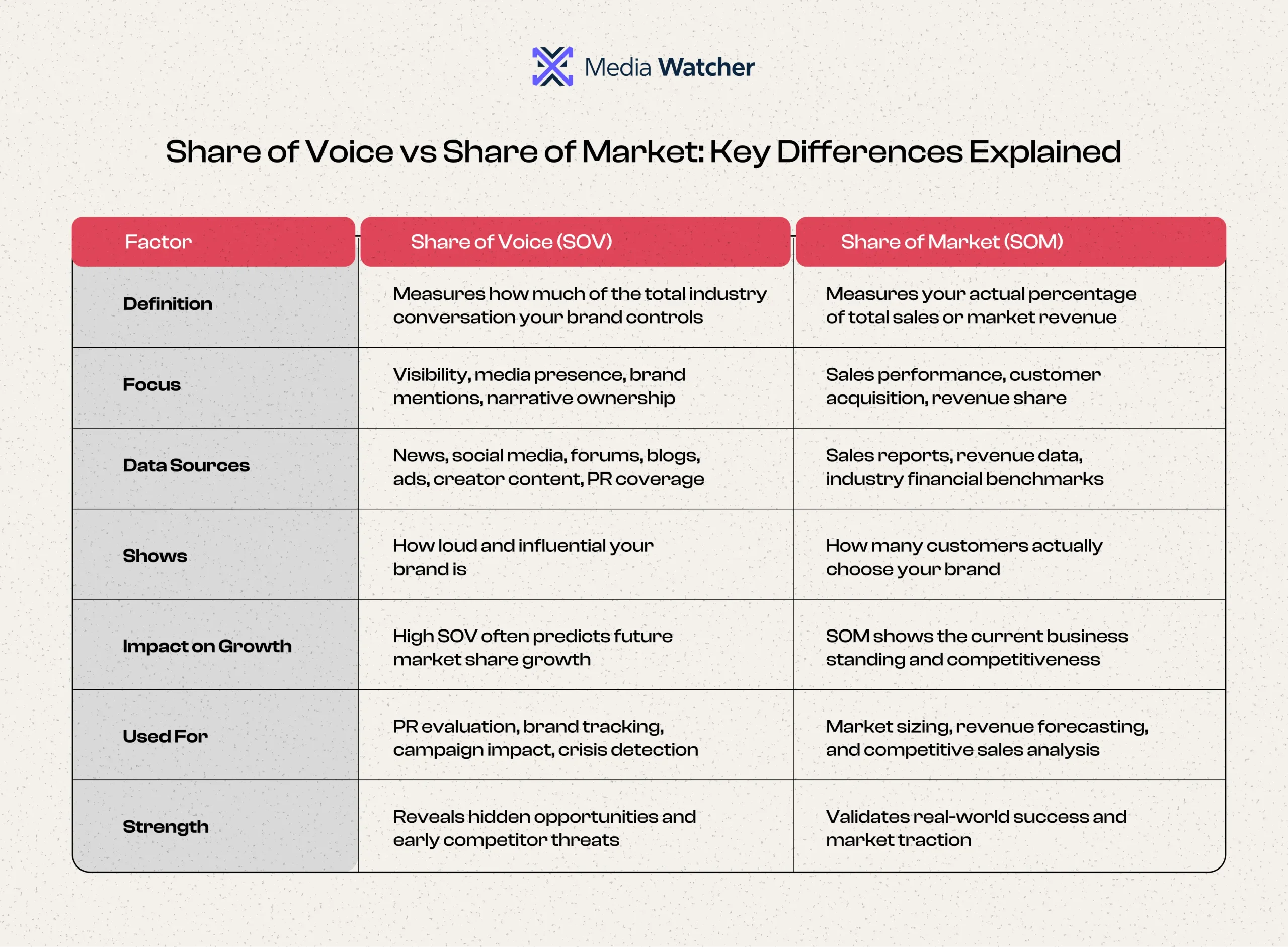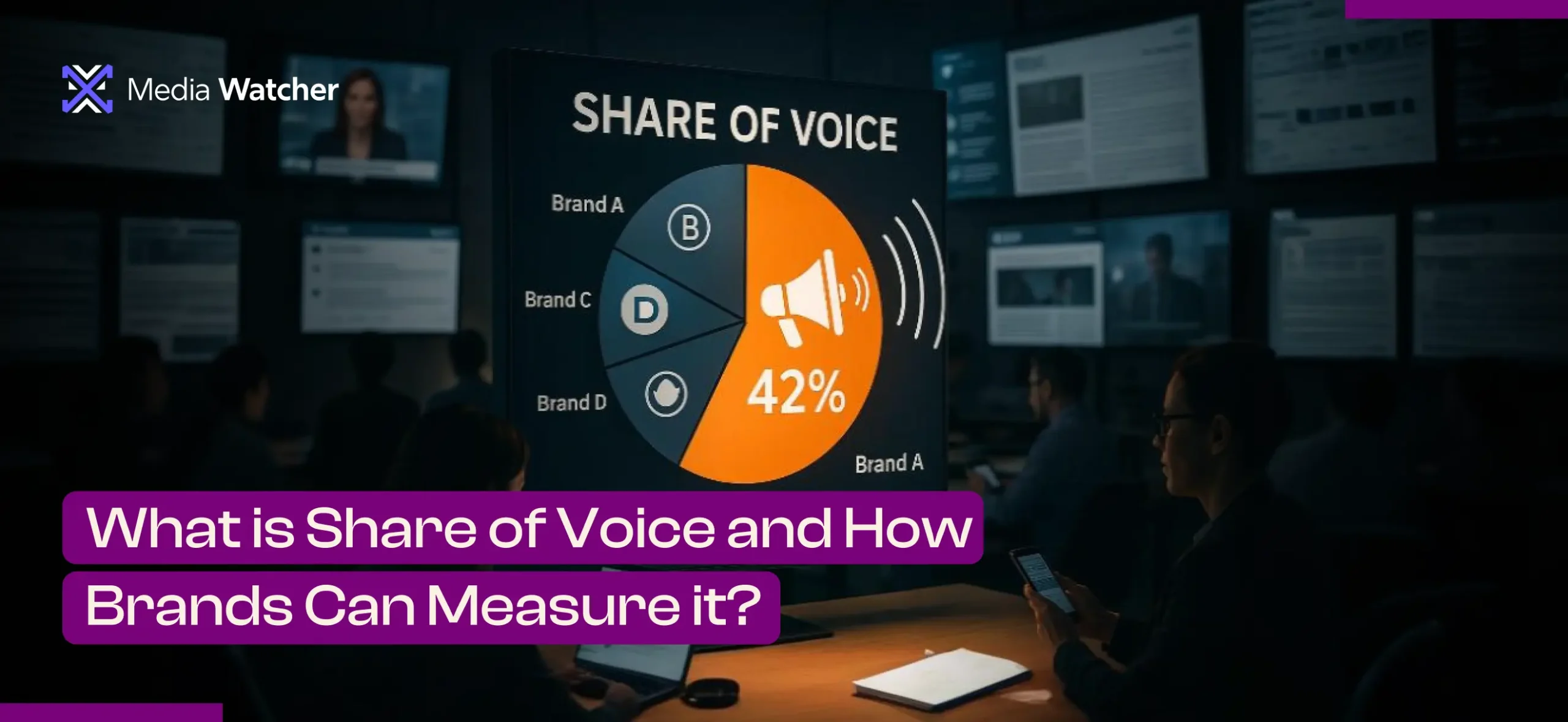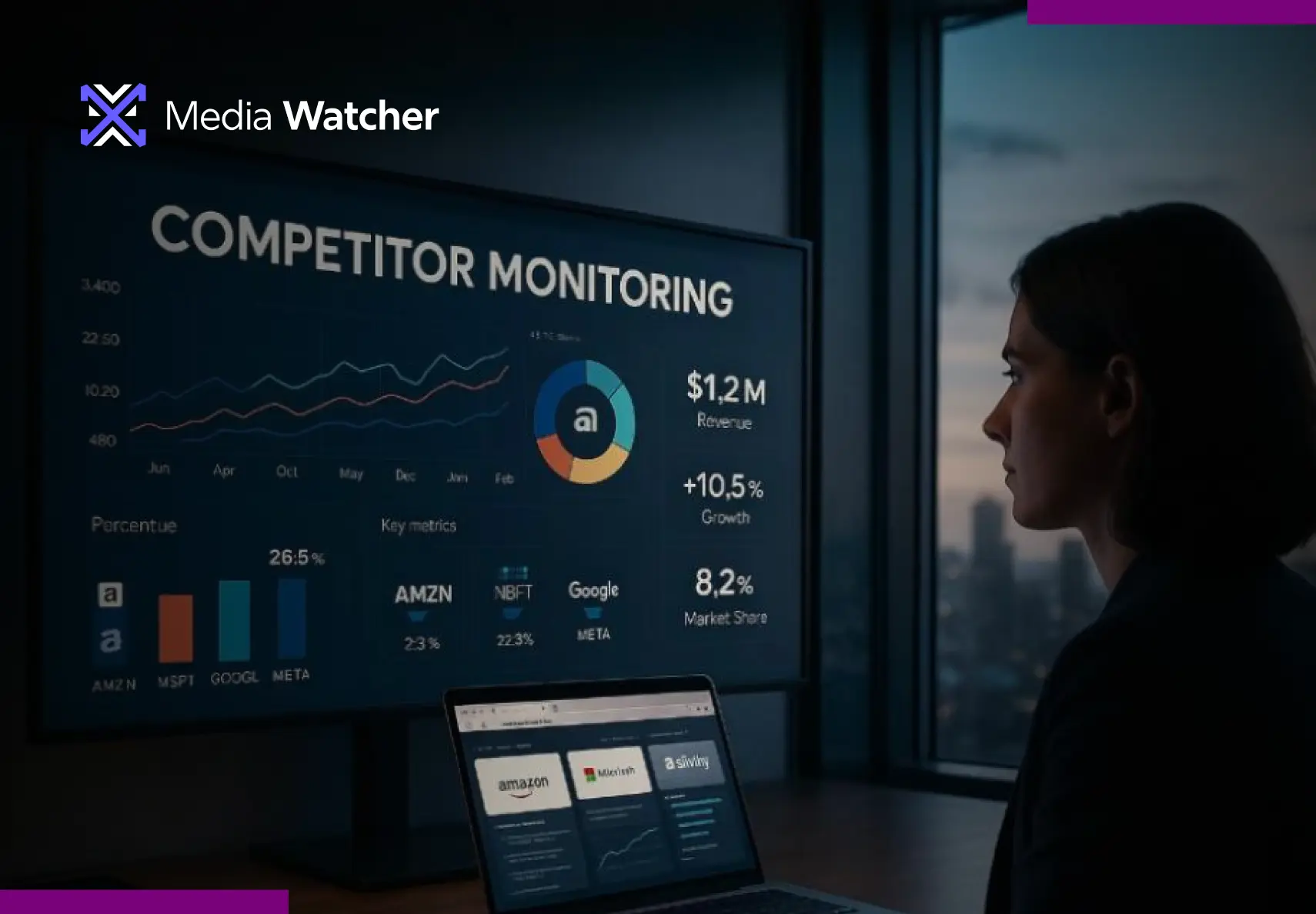Nowadays, visibility is not a marketing metric. It is a survival metric. Every brand is fighting for attention in a world where audiences are more distracted, more fragmented, and far less loyal than before.
What makes this even more complex is the shift in where conversations actually happen. The majority of brand-related discussions now take place outside mainstream social platforms.
This means the dialogue that shapes your reputation is no longer limited to Instagram comments or X threads. It is happening on Reddit, industry blogs, YouTube explainers, niche forums, local news sites, and micro creator content that traditional analytics tools might fail to track.
Therefore, this shift has quietly transformed a familiar concept that is Share of Voice (SOV). It was once treated as a simple ratio of brand mentions, and has now become a deeper reflection of brand influence, narrative ownership, and public authority.
Additionally, the companies that understand this evolution are gaining an unfair advantage, and the ones that don’t are flying blind.
What is Share of Voice? What Does it Really Mean Today?
Share of Voice definition has always been framed around one core idea that is the percentage of the total conversation that belongs to your brand. Traditionally, that conversation revolved around paid advertising or social media chatter, but today, the definition expands much further.
Share of Voice is now the measure of how much of the entire media universe acknowledges your presence, discusses your offering, or responds to your actions.
This “ media universe” includes publicly available news sites, podcasts, video content, review articles, forums, analyst discussions, social platforms, newsletters, LinkedIn discussions, and countless micro spaces where opinions form.
In essence, a brand with thousands of mentions but weak sentiment is not influential. In fact, a brand with fewer mentions but higher authority sources holds more narrative power.
Let’s explore how share of voice is different from share of market.
Comparative Analysis of Share Of Voice Vs Share Of Market

The Modern Anatomy of Share of Voice
To understand Share of Voice today, think of it as a multi-dimensional signal rather than a single percentage. The strongest SOV frameworks capture elements such as sentiment, influence, and conversational velocity.
However, volume still matters, but it is only one piece of a much larger picture but sentiment reveals whether your visibility is beneficial or damaging.
Moreover, authority matters too because visibility on reputable outlets creates long-term credibility that social virality cannot match.
The narrative relevance also ensures the conversations truly concern your brand rather than noise. This conversation velocity shows how quickly a message spreads and how far it travels.
Another important factor includes channel diversity, which indicates whether your brand is resilient across multiple media formats, so when these layers combine, they form a more accurate and actionable version of share of voice reports.
Why the Old Share of Voice Model No Longer Works
Many dashboards still calculate SOV by scraping only a handful of social channels. This approach treats social visibility as the entire story when it is only a fraction. This gap exists because big conversations erupt on platforms that older tools never monitor.
These high-impact interactions do not always leave traces on traditional social channels. The old SOV model also treats all mentions as equal. It counts a comment from a random account the same as a feature from a respected journalist. It overlooks multilingual content, ignores sentiment, and misses how fast narratives evolve.
How to Measure Share of Voice?
To measure your Share of Voice, you first need to define which channel or space you’re measuring. It isn’t limited to social media, as brand perceptions are discussed across multiple digital environments today. Some of the most common SoV categories include:
- Social listening platforms
- News and media sites
- Podcasts
- Forums such as Reddit
- YouTube comment sections
- Industry publications
- Blogs
- Community or niche channels
Once your channels are defined, you can apply the core formula:
SoV = (Your brand’s mentions ÷ Total mentions in your industry or among competitors) × 100
This formula stays the same across all channels, as the brand simply substitutes the metrics based on what they are measuring.
Why Automated Share of Voice Has Become a Strategic Indicator
Businesses now monitor share of voice not only to track brand performance but to anticipate market movement. The visibility patterns reveal competitor threats before they show up in sales data.
A rise in negative SOV often signals an emerging PR crisis, while a high positive SOV reflects category leadership, even if revenue hasn’t yet caught up.
And when SOV grows organically without excessive marketing spend, it indicates genuine brand momentum, which is the most fascinating insight for leadership and PR teams.
This becomes clearer when examined through a real example of how a single event can reshape SOV.
The SOV Impact of Patagonia’s “Earth Is Now Our Only Shareholder” Statement
A powerful SOV shift driven by reputation, not advertising, in 2022, when Patagonia, a famous outdoor clothing and gear company from the United States, made a statement regarding its new ownership model.
What happened?
When Patagonia’s founder transferred the company’s ownership to a climate charity, the global media flipped.
Here is the overview of Online Share of Voice Analysis
- Patagonia saw a massive SOV increase within 24 hours
- Sentiment was almost entirely positive
- Sustainability influencers, environmental activists, and journalists amplified the message.
- Competitors’ share of voice remained flat.
What was the Outcome?
Patagonia solidified its position as the moral leader of the apparel industry.
This example demonstrates how brand values can drive massive SOV, especially when aligned with cultural priorities.
How to Improve Share of Voice?
Brands can win SOV today by acting with precision rather than volume. They can improve their share of voice by focusing on niche conversations with high relevance, publishing expert commentary that attracts authoritative sources, and responding early to rising narratives.
Brands should focus on increasing multilingual visibility and on using brand monitoring tools instead of pushing ads into every conversation. It’s more important to be consistent than to be loud. Here is how a brand can improve its SOV:
- Focus on niche conversations
- Publish expert-led commentary
- Watch rising narratives
- React fast during industry spikes
- Strengthen multilingual presence
- Prioritize earned media
How Media Watcher Redefines Share of Voice in Today’s Landscape
Media Watcher makes Share of Voice truly comprehensive by monitoring 100,000 global media sources across 80 languages.
Instead of relying on just social platforms, it captures news, forums, blogs, reviews, videos, and creator content for a full cross-channel view. The platform detects real-time spikes in conversation, helping brands respond to crises, leverage PR wins, and track competitors instantly.
Its sentiment score shows whether visibility is positive, neutral, or negative, while competitor monitoring using media intelligence reveals how your brand compares across media density and narratives.
With keywords, topic, and virality tracking, Media Watcher highlights emerging themes and fast-moving conversations before they escalate. Visit our website, book a demo, and explore for yourself!




